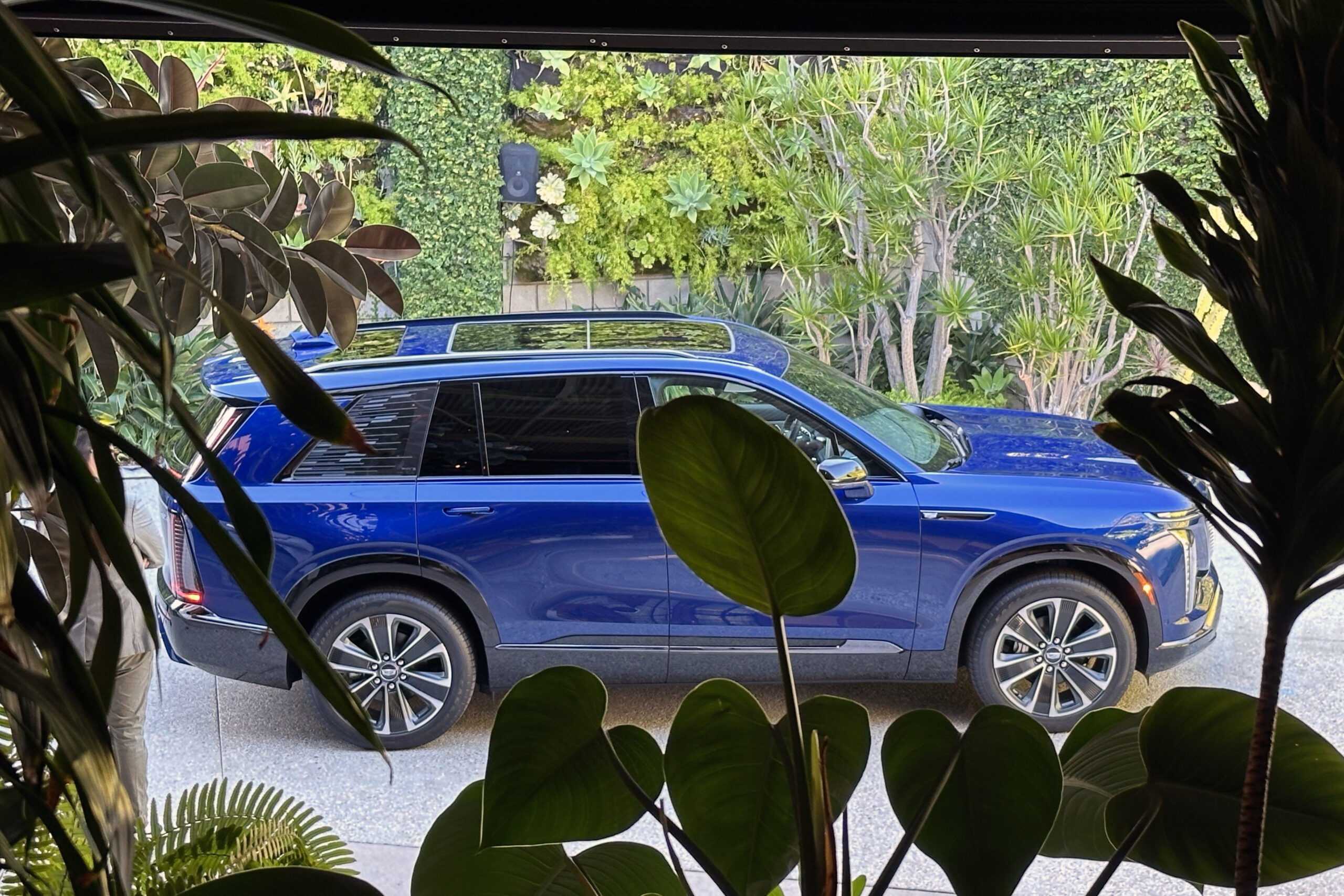- Three row electric SUV
- 300-mile range
- 615 HP
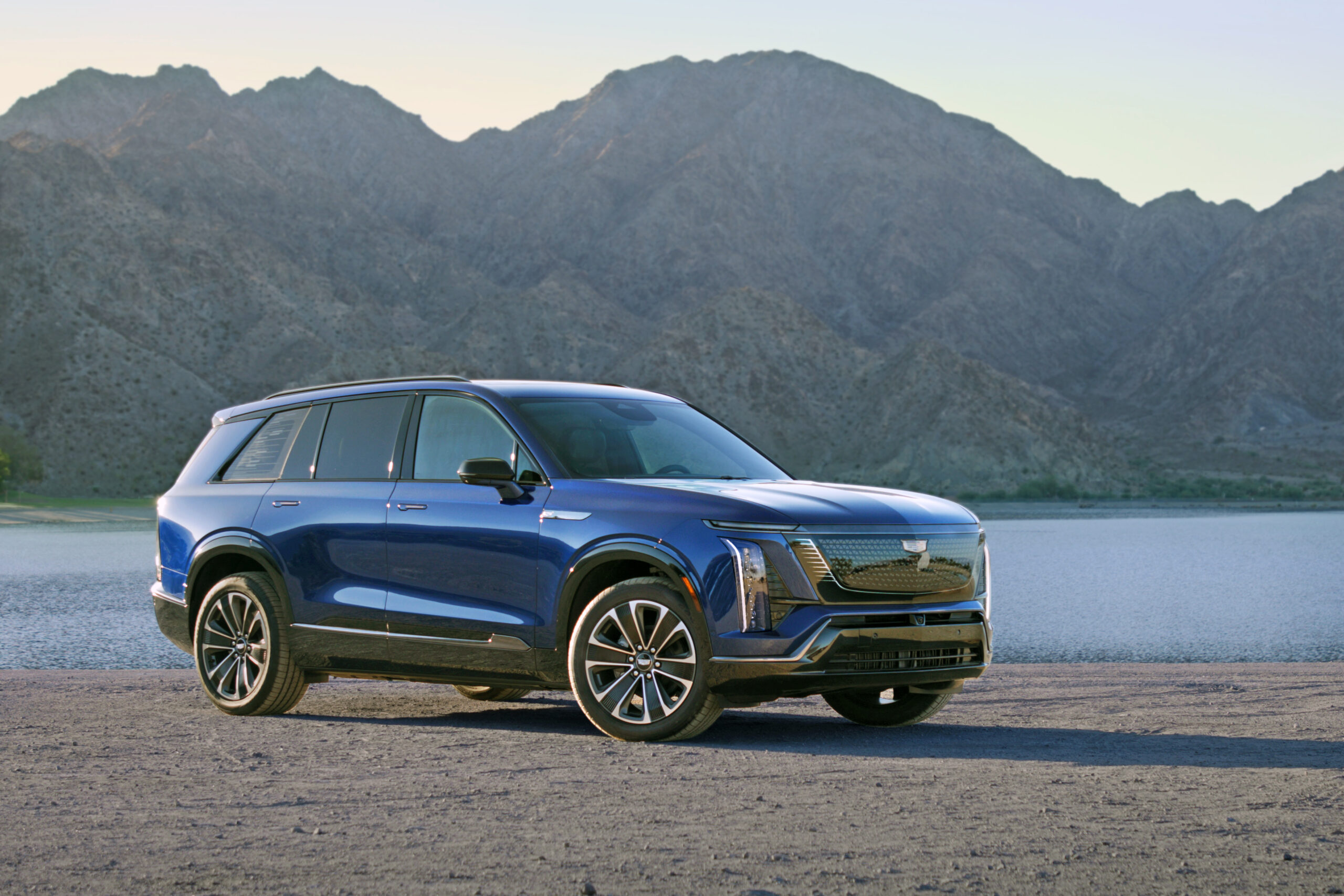
Who knows what the next four years will mean for the electric car, but for now at least Cadillac is pushing ahead, readying the 2026 Vistiq three-row electric SUV for a summer of ’25 retail launch.
The midsize – big midsize – luxury model, or course, was underway long before the Nov. 5 national election changed the direction of U.S. politics moving forward.
The Vistiq will give Cadillac a total of five EVs: the compact Optiq SUV, expected to launch be early 2025; the midsize 2-row Lyriq crossover, which launched in mid0-2022; the Vistiq; and the bigger-than-life three-row Escalade IQ and built-to-order Celestiq sport-luxury sedan-styled hatchback, both scheduled to go on sale by the end of 2024. (All those “iq” endings are pronounced “ick,” not “eek.”)
It is powerful – 615 horsepower in “Velocity Max” mode trigered by mashing a red button on the steering wheel – and 650 pound-feet of torque. But the Vistiq also delivers decent range – a Cadillac-estimated 300 miles per charge. And like most new Caddies it offers true luxury, although EV sensibilities dictate no leather.
The Vistiq shares a design esthetic with the Escalade although its slab-sidedness is relieved with some nice sculpting on the door panels and a rearward curve to the roof. It features the shield-shaped, lighted Lucite grille and vertical LED headlight and taillight stacks that have become a Cadillac EV trait, along with 21-inch or 22-inch wheels as standard equipment (trim dependant), with optional 23-inchers.Two particularly nice touches are the laminated rear quarter windows and a rear window wiper that’s concealed beneath the roof overhang/spoiler/high-mount brake light housing.
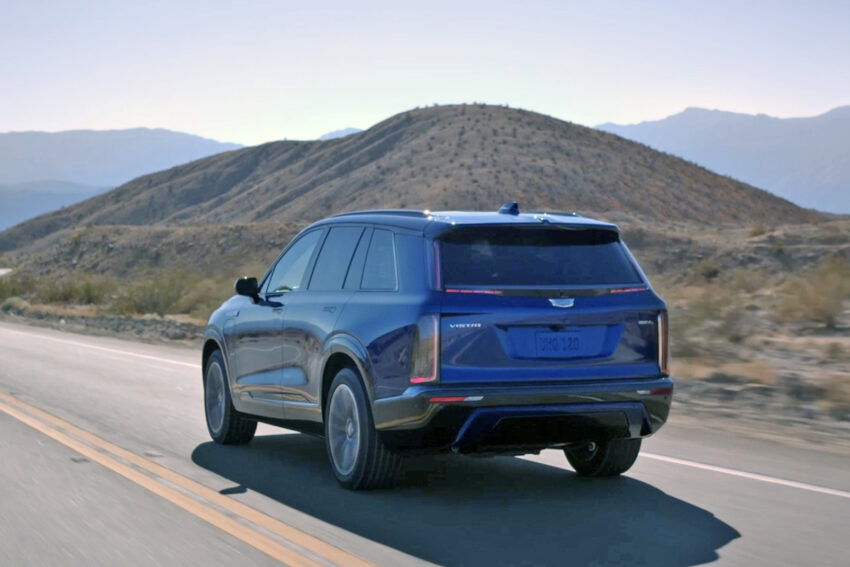
We figure the Vistiq is aimed at luxury EV buyers who need that third row of seats, prefer a domestic brand and want to save a few dollars versus most competitive imports. We’ve not yet had the opportunity to get behind the wheel, so can’t comment on how competitive the Vistiq is versus likely competitors.
What’s the Vistiq Cost?
There aren’t many 3-row luxury SUVs out there and the Vistiq is priced lower than most.
Pricing for all trims hasn’t been announced, but Cadillac says the base Vistiq, including destination, will be $78,790. We expect pricing will soar into the high $80,000s or even the low $90,000s. Most of the Vistiq’s probable competitors start in the low $80,000s.
Likely competition in size and price includes the Lucid Gravity, Rivian R1S, Volvo EX 90, and, of course, the aging Tesla Model X. The Mercedes-Benz EQS SUV is similarly sized but has a tighter third-row and a heftier price tag – it starts at $106,400.
Kia, while not a luxury brand, fields a highly competitive 3-row electric SUV with its EV9. Some shoppers might find a fully loaded top trim EV9 to be just as pleasing as the Vistiq at a much lower cost.
Likewise, the new 3-row Volkswagen ID.Buzz doesn’t offer the luxury or power of the Vistiq, but it makes a statement at about $20,000 less than the Vistiq.
Size and the Vistiq
Overall, the Vistiq is 6 inches shorter than the internal combustion Escalade, 20 inches shorter than the electric Escalade IQ and 6 inches longer than the Lyriq. It also is 3.5 inches shorter than the three-row Cadillac XT6 gas-burner, which is closest to it in size and utility in the Caddy lineup.
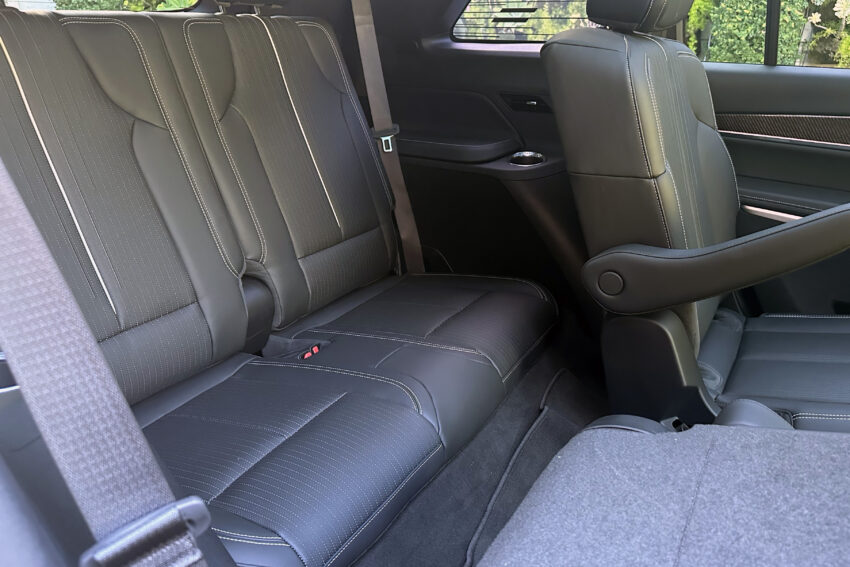
Although shorter outside than the standard Escalade, the Vistiq boasts a 121.8-inch wheelbase, an inch more than the Escalade and 8.2 inches more than the XT6’s.
Stretching the wheelbase not only smooths a vehicle’s ride somewhat, it also opens up a bit of interior space. Cadillac applied a lot of the extra room to the cargo bay behind the third-row seating, which is 20% larger than in the XT6.
The Vistiq also provides an inch more legroom than the XT6 for second- and third-row passengers and three inches more for the front row, and offers two seating layouts, depending on trim: Six-passenger with a pair of captain’s chairs in the second row, or seven-passenger with a bench seat in the second row. In either case, the second-row seats slide but aren’t removable.
Vistiq Trims and Features
Cadillac says there will be four trim levels, Luxury, Sport, Premium Luxury and Platinum. All will use the same dual motor, all-wheel drive powertrain. The first three will be available at launch, the Platinum is slated to follow in mid-2025.
The base Luxury trim will start at $78,790, including a $1,395 destination fee. Because the base Vistiq slides in under the $80,000 cutoff for federal tax credit for trucks – and fits the definition of a truck – its real cost is likely to be just over $71,000 plus taxes and fees.
Caddy hasn’t released a full list of features, but we’ve been told that they will include 21-inch alloy wheels on the lower trims and 22-inch wheels on the two upper trims, all shod with all-season tires; trim-specific grilles; heated and cooled front seats with massage function, faux-leather upholstery, a 33-inch combination digital driver information and infotainment screen paired under a curved glass mounting, a digital camera rearview mirror and a 23-speaker AKG Studio audio system that’s Dolby Atmos ready. Third-row seating gets its own climate system (controlled from the second-row for some reason) plus cupholders, USB charger ports and smartphone storage.
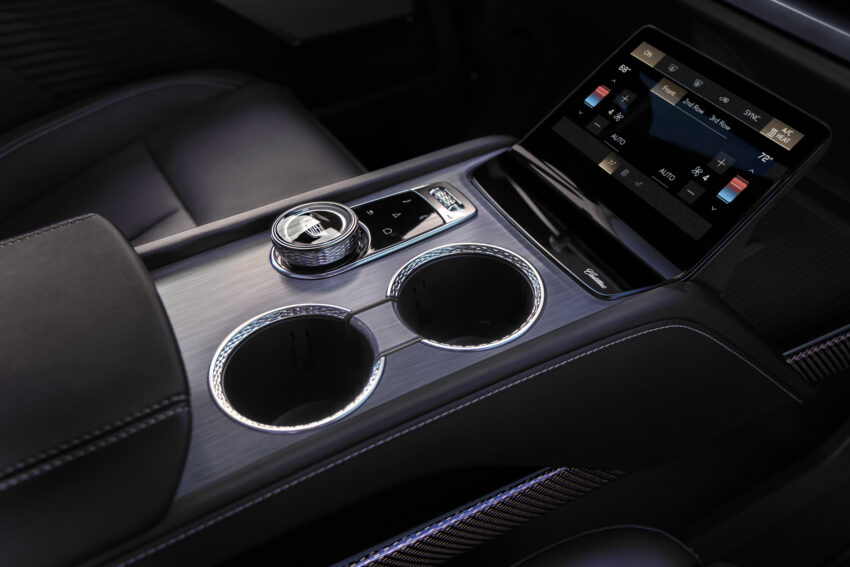
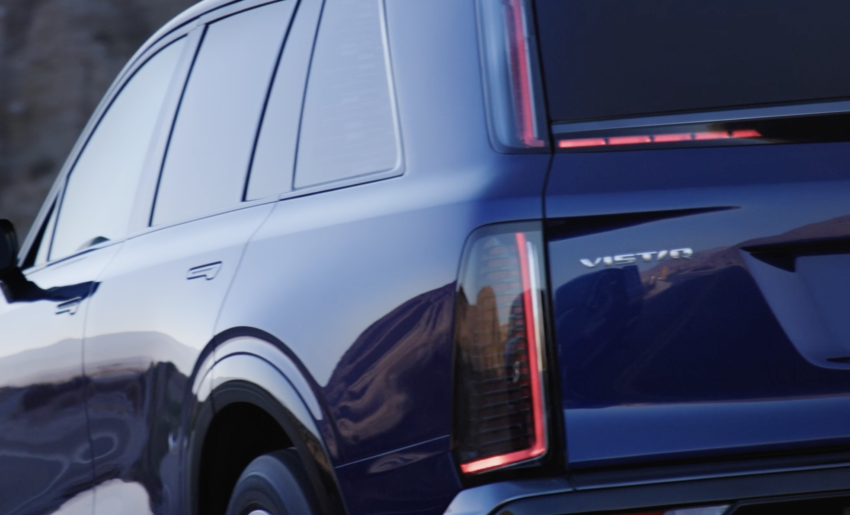
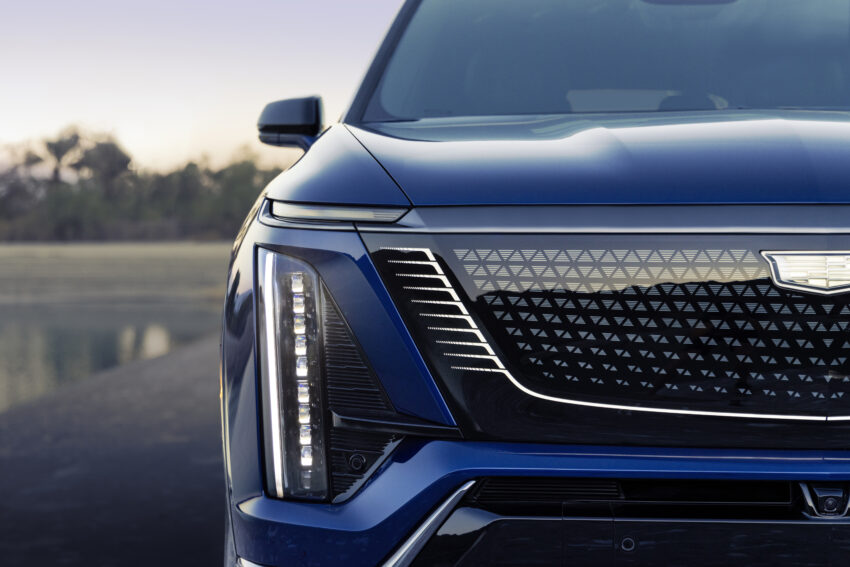
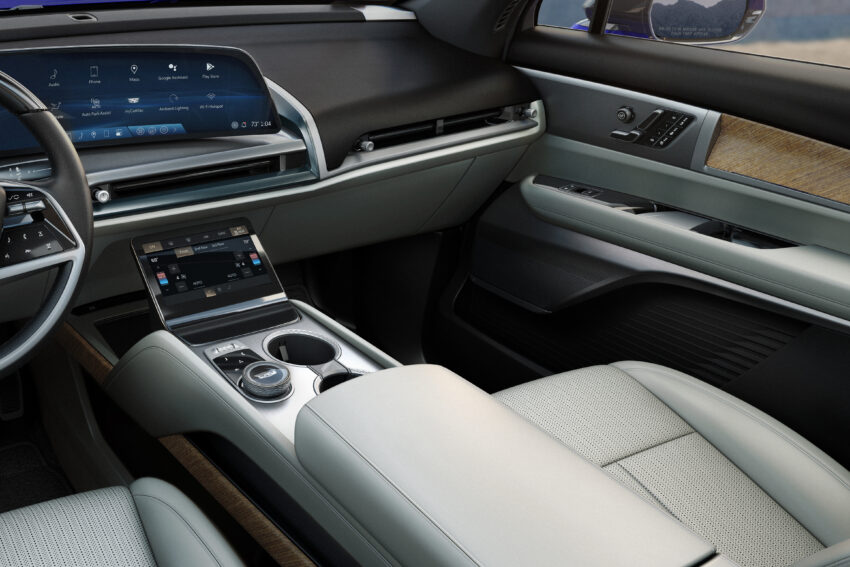
The Luxury and Sport trims get second-row bench seats, the Premium Luxury and Platinum trims get captain’s chairs.
We’ll update this list once the full catalog of standard features and options is available.
Range, Battery, Charging and Stuff
The Vistiq will be built on GM’s Ultium battery BEV3 platform for EVs – shared with the Lyriq, Celestiq and the Chevrolet Blazer EV. Cadillac has said the Vistiq battery pack will have 102 kilowatt-hours capacity – slightly larger than the Lyriq’s and about half that of the GMC Hummer EV SUV.
Cadillac estimates the Vistiq will deliver 300 miles of range on a full charge, which will be great, but not chart-topping. The Lucid Gravity, for instance, is rated at up to 440 miles, and the Model X claims 335 miles per charge.
The Vistiq will be capable of DC fast charging at up to 200 kW per hour, which Cadillac says translates to adding enough juice in 10 minutes to restore 79 miles of range, or about 30 minutes to bring a 90% depleted battery back to 80% of capacity.
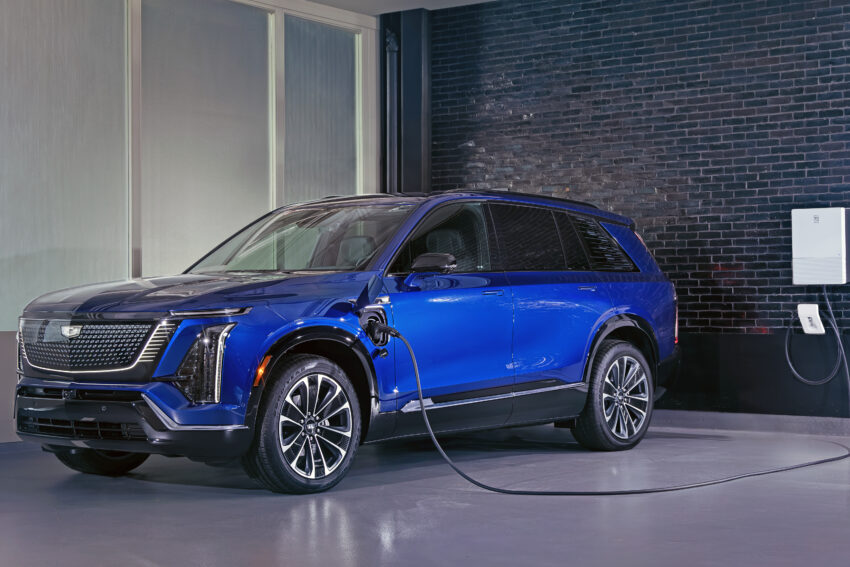
That’s par for the course for other EVs with similar-sized batteries. The Lucid Gravity and the Kia EV9, however, can charge at up to 350 kW an hour, cutting their 10%-to-80% charging times to under 20 minutes.
General Motors has said that starting in 2026 it will equip its EVs with a charging port that will work with Tesla’s Supercharger network. That means an adapter will be needed to use Tesla DC fast charging stations for the first Vistiq models.
For home charging, the Vistiq’s standard Level 2 system can handle up to 11 kilowatts per hour, easily enough to bring a depleted battery back to full charge overnight and, again, par for the course in the luxury category. A 19.2 kW system is optional but requires a dedicated 100-amp circuit, which could mean an expensive electric service upgrade for the home.
Most competitors also use 11 kw Level 2 charging.
Performance
As we’ve not driven the Vistiq we can only offer Cadillac-supplied info at this point, and here’s what the automaker has to say (in our words).
Output from the dual-motor, electronic all-wheel drive powertrain that’s standard on all trims is 615 hp and 650 pound-feet of torque. The Mercedes-Benz EQS SUV, Rivian R1S and Tesla Model X all have performance trims that have more power, but at sizeable premiums.
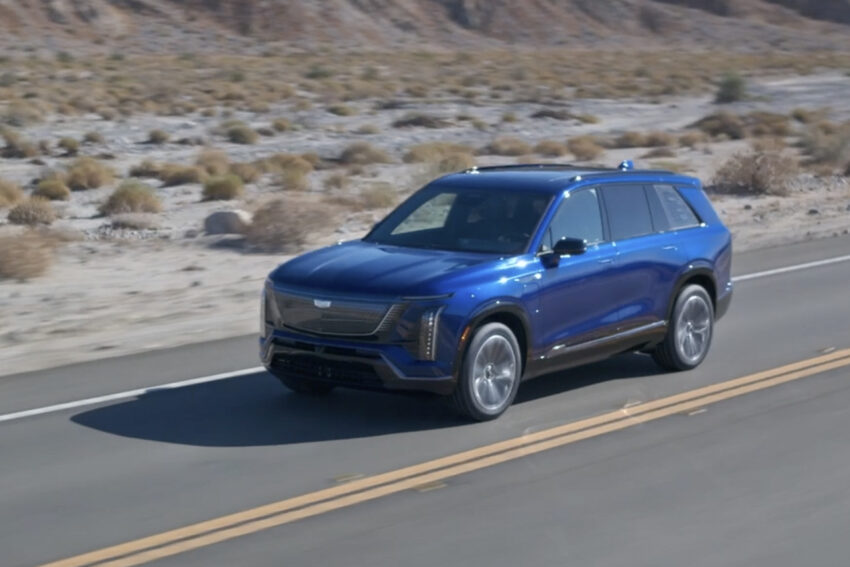
Cadillac says the Vistiq can reach 60 mph from a standing start in 3.7 seconds in “Velocity Max” mode and 4.7 seconds in the other driver-selectable driving modes: Tour, for everyday driving, Sport, for faster accelerator and steering response, Ice/Snow for modified torque to avoid slipping, and My Mode, which allows the driver to customize several functions including accelerator and steering response.
Semi-active roll control with coil suspension on the lower trims and air suspension on the two upper trims should provide for a petty smooth ride. We expect the Vistiq will also have electric variable-ratio power steering. Four-wheel steering, which should provide for spirited canyon carving sessions – as well as easy parking, is available on the upper trims.
There’s also multiple levels of regenerative braking the driver can select using a paddle on the steering wheel, and a one-pedal driving mode that can bring the Vistiq to a complete stop without use of the brake pedal.
We’ll report on handling and ride quality once we get behind the wheel.
Inside the Vistiq
The Vistiq boasts a luxurious interior with a modern yet familiar design language that avoids the austerity of a Scandinavian. Seats are nicely padded and bolstered and even the third row looks inviting. There’s no leather, but Cadillac offers a high-quality faux leather material as well as fabrics made from recycled plastics. Depending on trim level, the second row has either captain’s chairs or a bench with bucket-like cushioning. The Sport trim gets carbon-fiber interior trim pieces interwoven with copper wire; other trims get an engineered wood. Control knobs and cup holder rims are polished machined metal.
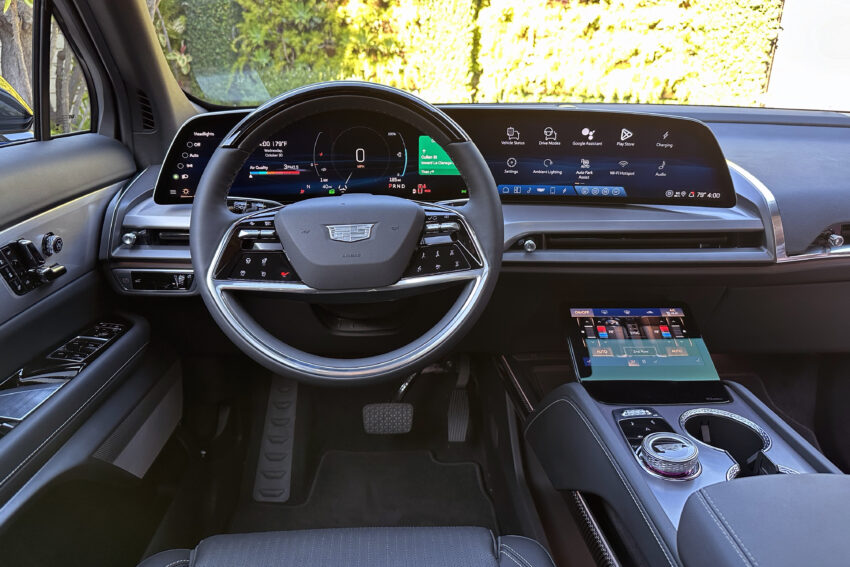
There’s a five-zone climate system, so each seat in the front and second rows gets its own vents and temperature settings while the third row has a separate climate module with a single vent for both positions.
The 2026 Cadillac Vistiq’s dash is dominated by that 33-inch curved glass panel housing OLED digital driver information and infotainment screens.
The infotainment system runs on Google’s android Automotive operating system with Google Maps, Google Assistant for voice commands and a smart navigation system that can do route planning and locate fast-charge stations. As with other GM vehicles using the system, there’s a proprietary mobile phone interface that’s not compatible with Apple CarPlay or Android Auto.
A multi-level center console holds wireless phone charging pad, cup holders, USB ports and both open and closed storage compartments. A large screen connects the console to the lower dash and houses controls for the climate system.
Passengers in the second row get their own 8-inch screen for climate and media.
At 17.1 feet bumper to bumper, the Vistiq is longer than all likely competition and its 121.8-inch wheelbase – bested only by the Mercedes-Benz EQS SUV and the ID.Buzz – helps open up the interior. Cadillac used the extra room to help maximize cargo capacity and legroom for the front- and second-row seating areas. The Vistiq leads the class in front legroom and only the EQS offers more second-row legroom. Conversely, only the EQS has less front headroom than the Vistiq, but every vehicle in the category are within an inch of one another, so the difference isn’t a minus. In second-row headroom, the Vistiq is bested only by the EQS.
The third-row seating area is fine for short trips or smaller passengers but offers the least legroom among likely competitors – the Buzz beats it by nearly foot (and everything else by 10 inches or so) while the Rivian R1S has 2 inches more than the Vistiq. Headroom for those way-back seats helps make up for the shorter foot well, though, as the Vistiq leads the pack, beating even the Buzz.
Cargo and Towing
Cargo area behind the third-row seats is a moderate 15.2 cubic feet, jumping to 43 cubes with the seat backs folded down and to a fairly spacious 80.2 cubic feet with both third and second-row seats folded away. There’s also a 3.5 cubic foot covered storage are below the rear cargo floor in lieu of the front trunk – frunk – that many other EV makers offer. We like the idea of keeping all of the cargo storage in the same area rather than having some under the hood at the front of the car.
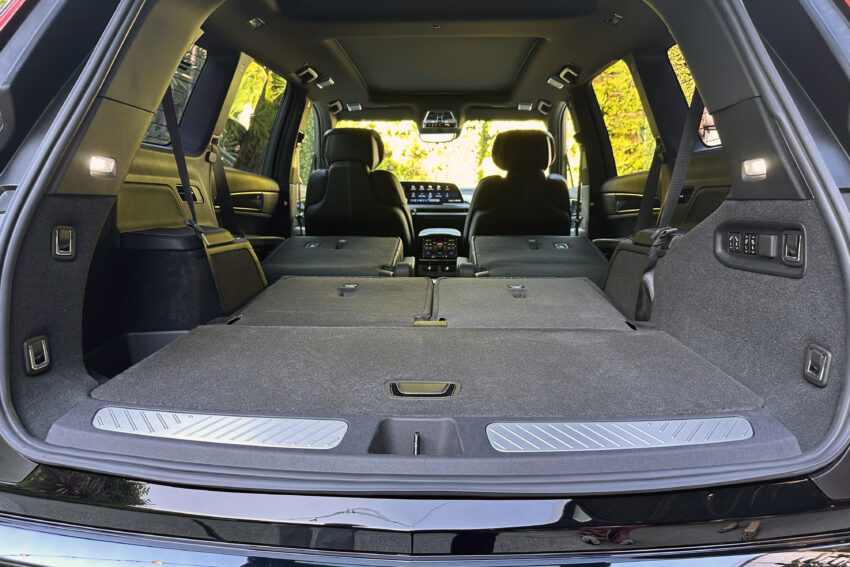
Among likely competitors, only the R1S and ID.Buzz offer more cargo capacity behind the third row and with third-row seats folded away. The Buzz, Rivian and Tesla’s Model X all have more cargo space with the second and third-row seats folded down.
The Vistiq is rated to tow a maximum of 5,000 pounds. Only by the R1S, at 7,700 pounds maximum, can tow more. The Model X ties the Caddy.
Safety
The Vistiq hasn’t been crash tested by either the National Highway Traffic Safety Administration or the nonprofit Insurance Institute for Highway Safety.
Standard safety and driver assistance tech hasn’t yet been fully disclosed yet but will include blind zone steering assist, forward collision alert and mitigation, an alert for bicyclists approaching from the side and On-Star automatic collision response.
Other standard safety and assistance features should include GM’s SuperCruise hands-free highway driving system that works on some 200,000 miles of mapped highways, a head-up display, surround view monitor, rear cross traffic alert with pedestrian detection, lane keeping assist and lane departure warning, parking assist and several years of complimentary OnStar service.
Final Thoughts
The Cadillac Vistiq offers loads of power, but several competitors, including the R1S, and Tesla Model X have performance versions that offer more. It’s roomy, but there are roomier competitors, especially for those willing to eschew luxury branding and accoutrements.
Overall, though, and especially for those who revere the Cadillac brand the Vistiq should compete quite well in features, technology and pricing – especially pricing- in the three-row luxury electric SUV segment.
